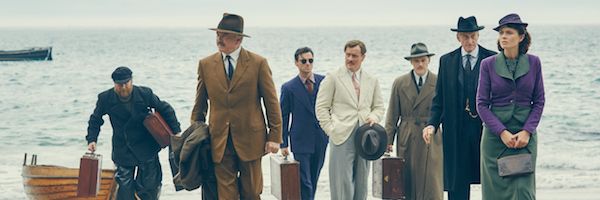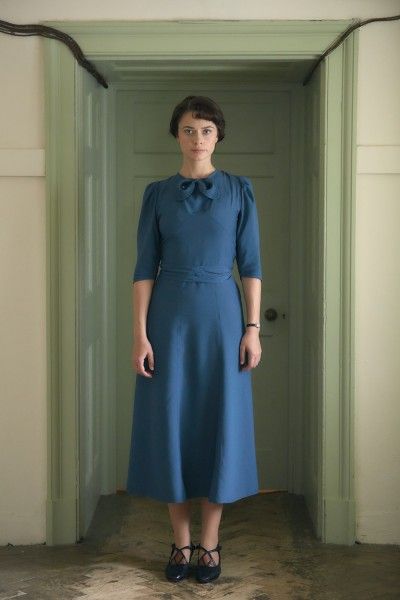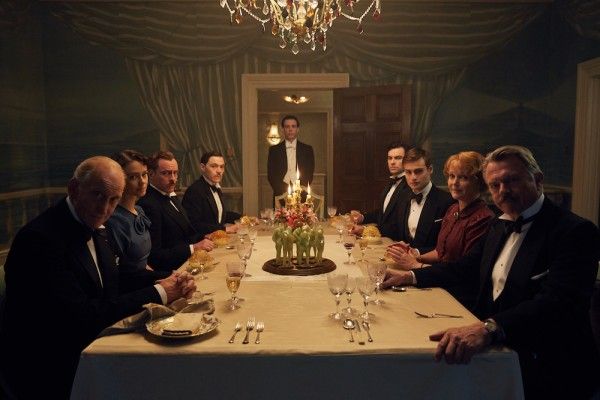Before the twisty murder-tinged shows of Netflix and Shondaland, the original master of the can’t-put-it-down murder mystery was Agatha Christie. Though the mechanics (though rarely the charm) of Poirot, Miss Marple, and her other fictional sleuths fit in with the crime procedurals of today, there are few (or no) series as breathtakingly dark and nihilistic as Lifetime’s adaptation of Christie’s most lauded novel, And Then There Were None.
Yes, on Lifetime. And Then There Were None is a BBC import that seems more likely suited to PBS, who has run the Poirot mysteries for decades, and tends to be the one-stop shop for British costume dramas. But Lifetime has been experimenting quite a bit with its programming over the last few years, first throwing all of their chips in with forgettable reality shows (although who didn’t at the time), before pivoting more towards programming aimed at minority women, as well as bold scripted content like UnReal, and now, a British invasion. The recent War & Peace miniseries was an incredible grab for the network, who is smartly buying up limited series from overseas rather than spending the dough on expensively costumed original series. Whether or not fans of this genre know to find the miniseries and movies on Lifetime though is another matter.
For those unfamiliar with the novel (formerly titled Ten Little Indians), And Then There Were None takes place in England in the 1930s, where eight guests have been invited by a mysterious host to a remote island for a dinner party. They are tended to at the mansion (whose owners are absent when they arrive) by two recently hired servants, bringing the number on the island to ten. That’s significant, since the macabre poem “Ten Little Soldiers” appears in every room, ominously detailing ten deaths. Once seated at dinner — and still awaiting their hosts — a gramophone starts playing a recording of the sins of each guest (and the servants). Allegedly they are all culpable of murder of different sorts, and now, it seems like they are trapped on the island to pay for their sins.
As the guests are plucked off one by one, the moody horror of And Then There Were None comes not only from the mystery of who the killer is (is it someone among them, or someone else hunting them down?) but also the truth of each of their transgressions. Though the house guests deny any wrongdoing, they slowly begin confessing — revealed narrative and visually — the dark truths about their pasts.
The two-part miniseries — adapted by Sarah Phelps and directed by Craig Viveiros — is visually stunning, especially when night falls and the creaks of the house and potential killer on the loose start turning the tale into a true one of horror. (It also features a lot of robes and men in towels — it knows what it’s doing). Unfortunately, the miniseries was originally broadcast in three parts, and there seems to be something lost in translation, with the presumed editing out of some scenes for time that make elements of the storytelling feel a little jarring or incomplete (fans of the novel will also note some changes to the backstories of the main characters, not all of which make good sense).
Still, most of the miniseries sins can be forgiven thanks to its exceptional cast, which features such stalwarts of the British film and TV establishment as Charles Dance, Burn Gorman, Anna Maxwell Martin, Sam Neill, Miranda Richardson, Toby Stephens, Aidan Turner, Douglas Booth, and Noah Taylor. Maeve Darmody serves as the story’s central figure, Vera, a young secretary whose backstory we see in more detail than most, with its consequences some of the most jarring.
And Then There Were None is also a fantastic psychological portrait of a group of frightened, confused people turning on one another in the face of fear, while also having to rely totally upon one another. Yet — perhaps it’s a British trait — no one seems that deeply rattled by having to deal with the butchered corpses that keep piling up, even of people they grew to know and even like over their few days on the island. Keep calm and soldier on, I suppose.
Most of the fun (if it can be called that) of And Then There Were None comes, of course, from trying to work out who the killer is, and how the “game” works (as each member of the household if picked off, a small statuette on the dining table disappears). But the incredible acting talent also makes each guest so unique that seeing them interact (or just wander the house alone — don’t go into that dark corridor!) becomes another kind of pleasure, and also part of the puzzle.
Lifetime is, smartly, airing the miniseries on two consecutive nights to keep the momentum going, as it (like any good mystery) makes for a good binge watch. But it is also gruesome and bleak, with an ending that may not satisfy all viewers, but certainly makes for bold, audacious storytelling (much like the original novel). Lifetime, like its parent network A&E, seems to be in the middle of a content transition, figuring out how to best define themselves in such a noisy landscape. If it means getting more series like War & Peace and And Then There Were None, though, it feels like it’s heading in the right direction.
Rating: ★★★★ Very good — Creepy, fine television
And Then There Were None premieres Sunday, March 13th, and concludes Monday, March 14th on Lifetime.





